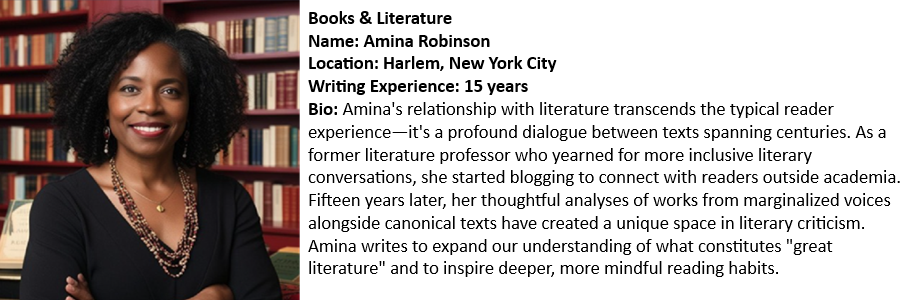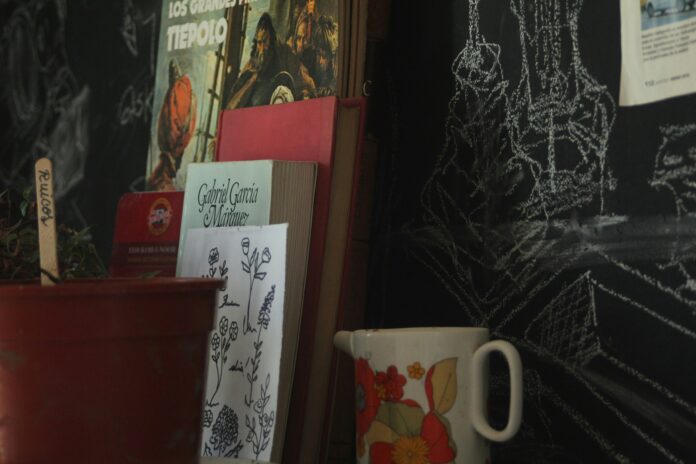Understanding Magic Realism
Magic realism is a distinctive literary genre that intricately weaves magical elements into realistic settings, thereby creating a unique narrative style that challenges conventional perceptions of reality. This genre emerged prominently from Latin American literature in the 20th century, gaining recognition through the works of influential authors such as Gabriel García Márquez and Isabel Allende. Their narratives often illustrate an unbending coexistence between the extraordinary and the ordinary, allowing miraculous occurrences to seamlessly blend into the fabric of daily life.
One of the key characteristics of magic realism is the acceptance of the fantastical as a normal part of life. In this genre, phenomena that defy the laws of nature are presented without disbelief; characters interact with magical aspects of their world as if these elements are commonplace. This approach challenges readers’ understanding of reality and encourages a deeper exploration of the complexities of human existence. It invites them to reflect on the interplay between reality and imagination, ultimately enhancing the narrative depth.
The significance of magic realism extends beyond its narrative style; it serves as a powerful tool for reflecting cultural identities and examining social realities. Through its use of surreal elements, magic realism can address underlying issues such as colonialism, identity, and the human condition. The genre allows authors to explore profound themes while maintaining a connection to their cultural roots, often reflecting the nuances of their societies in a way that is both engaging and thought-provoking. In doing so, magic realism not only entertains but also fosters a profound understanding of the complexities that define the fabric of reality through its magical lens.
Influential Authors and Their Works
Magic realism, a literary genre that blends fantastical elements with reality, has been significantly shaped by various authors throughout the years. Among the most influential figures in this genre are Gabriel García Márquez, Isabel Allende, and Salman Rushdie. Each of these writers has contributed uniquely to the development of magic realism through their distinct narratives and thematic explorations.
Gabriel García Márquez is arguably the most renowned magic realist, with his seminal work, One Hundred Years of Solitude, often hailed as a cornerstone of the genre. This novel chronicles the Buendía family across several generations in the fictional town of Macondo, weaving magical elements deeply into the fabric of the family’s history. Márquez employs rich, vivid imagery to illustrate emotions and cultural identity, drawing readers into a world where the extraordinary exists alongside the ordinary. His narrative style, characterized by intricate details and fluidity between the real and surreal, has inspired countless authors and remains a foundational model in magic realism.
Isabel Allende’s contributions to the genre are notable for their intricate blending of personal and political narratives. Her novel, The House of the Spirits, explores themes of love, family, and the impact of political turmoil in Chile. Through the use of magical realism, Allende infuses her story with spiritual and mythical dimensions, enhancing the emotional resonance of her characters’ experiences. The novel’s multi-generational perspective and incorporation of supernatural elements create a rich tapestry that reflects both personal and collective histories, emphasizing the enduring legacy of cultural memory.
Salman Rushdie’s work, particularly Midnight’s Children, exemplifies the intricate relationship between magic realism and historical context. Rushdie’s storytelling interweaves the lives of young Saleem Sinai and the historical events surrounding India’s independence, making use of fantastical elements to explore themes of identity and nationhood. His innovative narrative techniques, including nonlinear storytelling and metafiction, challenge conventional perceptions of reality, positioning magic realism as a powerful tool for exploring profound societal issues.
Themes and Social Commentary in Magic Realism
Magic realism stands out as a genre that adeptly intertwines magical elements with realistic settings to highlight profound themes and social commentary. Authors use this unique narrative style to weave together fantasy and reality, thereby allowing for a multifaceted exploration of societal issues. One of the core themes prevalent in magic realism is the critique of oppression, where the fantastical elements often serve as metaphors for real-world struggles. For instance, in Gabriel Garcia Marquez’s “One Hundred Years of Solitude,” the Buendía family’s experiences reflect the tumultuous history of Latin America, exposing the cyclical nature of oppression and the impact of colonialism.
Identity formation is another important theme within magic realism. The genre allows authors to delve into the complexities of personal and collective identity, often emphasizing the intersection of cultural heritage and individual experiences. In this context, the magical elements signify aspects of identity that are difficult to articulate, thus fostering a deeper understanding of the characters’ struggles. Isabel Allende’s “The House of Spirits” exemplifies this, as it traces multiple generations of women grappling with love, trauma, and resistance while grounding their experiences in the supernatural.
Furthermore, historical memory plays a significant role in magic realism, as it enables authors to confront and reinterpret historical narratives. The blending of magical and real elements serves as a catalyst for reflecting on collective memories and the inconsistencies present within them. Works like Salman Rushdie’s “Midnight’s Children” reveal how personal lives and national history are intricately linked, inviting readers to recognize the nuances of memory in shaping identity and society.
Through these thematic concerns, magic realism becomes a powerful vehicle for social, political, and cultural critique, challenging readers to reflect, question, and engage with the world around them. The enchanting narratives inherent in this genre serve not only to entertain but also to provoke thought, inspire change, and foster a deeper understanding of human experiences.
The Legacy and Influence of Magic Realism
Magic realism has established itself as a significant narrative technique that continues to shape contemporary literature and popular culture. Originating in Latin American literature, the genre has inspired countless writers and artists, fostering a unique blend of the fantastical and the mundane. This blending provides a rich tapestry for storytelling, which resonates with readers searching for deeper meanings within the complexities of life.
The influence of magic realism extends beyond the written word. In film, directors such as Guillermo del Toro and Hayao Miyazaki have drawn on the genre’s elements to create visually stunning works that infuse magical elements into realistic settings. Movies like “Pan’s Labyrinth” and “Spirited Away” showcase how magic realism can evoke profound emotional responses while addressing pertinent social issues. By incorporating themes of politics, identity, and human existence, these films reflect the enduring relevance of magic realism in modern storytelling.
Additionally, the art world has been significantly impacted by magic realism. Artists like Frida Kahlo and Salvador Dalí have utilized its principles to explore personal experiences and societal narratives, while contemporary artists continue to challenge perceptions of reality through their work. As the art community embraces this genre, the fusion of reality and fantasy invites viewers to interrogate their own experiences.
As new writers emerge, the legacy of magic realism remains a vital source of inspiration and innovation. Embracing the genre allows contemporary authors to experiment with narrative devices, creating works that address pressing issues such as climate change, migration, and social justice. By integrating magical elements within relatable contexts, they enhance readers’ engagement and invite them to explore different perspectives.
Ultimately, magic realism serves as a timeless narrative technique that transcends cultures and eras. It remains a powerful tool for exploring the complexities of human existence while bridging the gap between the extraordinary and the everyday. As literature and art continue to evolve, the influence of magic realism will undoubtedly persist, prompting future generations to embrace its magic.


